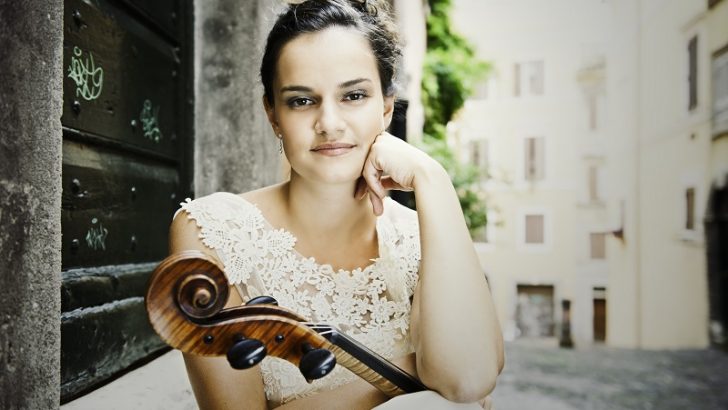Pat O’Kelly
Three recent events engage an element of novelty. Two involve the RTÉ NSO at the NCH with the third, at nearby St Finian’s Lutheran Church, as part of a Music Network nationwide tour.
On their seven-venue stop, German cellist Raphaela Gromes and pianist Julian Riem choose a programme with a strong Italian flavour that displays their exemplary talents.
They begin with a mainly lively Serenata by Busoni that sets the trend of much that follows. Giuseppe Martucci’s Sonata of 1884 is solid and vigorous with influences of Brahms and Mendelssohn, particularly in its invigorating Scherzo. The visiting artists enter into the spirit of the music with unbridled panache.
There are brilliant excursions into Rossini and others paying homage to him but the première of Kevin Volans’ commissioned Cello: Piano 2 stands aloof. Hopping piano staccatos separate and accompany biting cello pizzicatos. But there are periods of elegant legato as well and the piece seems to capture the imagination of musicians and audience alike. I love it.
It may seem odd to find Tchaikovsky in the novelty category but performances of his 7th Symphony are rare. He began sketching it in the early 1890s giving it the title, Life. He felt the first movement should be “all upsurge and confidence; the second love; the third disappointment and the Finale death”.
However, abandoning his sketches, he massaged some of them into his single movement 3rd Piano Concerto. Painstakingly, Soviet musicologist Semen Bogatirev reconstructed the symphony, which was played for the first time in Moscow in 1957.
Grandeur
Certainly UK conductor Thomas Kemp and the NSO make the most it, taking it also to Galway and Waterford. Much of the opening recalls the grandeur of Tchaikovsky’s ballets and the ball scenes in Yevgeny Onegin.
The 2nd movement is elegiac, the 3rd moderately effervescent but with dark undertones related to Swan Lake’s sorcerer Rothbart and the Sleeping Beauty’s malevolent Carabosse. The ebullient finale is energetic. However, while worth doing occasionally, I cannot see the piece sweeping Tchaikovsky’s other symphonies under the carpet.
The pièce de résistance comes with Swedish conductor Patrik Ringborg directing a thrilling concert performance of Erich Korngold’s opera Die tote Stadt (The Dead City). Dating from 1920, when the composer was 24, Korngold’s orchestration is wildly extravagant where, besides a full symphonic complement, there is piano, harmonium, organ and humble mandolin. The end result almost surpasses the opulence of Mahler and Richard Strauss.
Set in Bruges, grieving widower Paul erects a shrine to his late wife Marie in their house. Enter Marietta, one of a troupe, in whom Paul sees Marie’s reincarnation. Suffering hallucinations, he believes he strangles Marietta with a lock of Marie’s hair. Returning to reality, Paul discovers Marietta is alive but decides to leave her and Bruges – The Dead City.
Soprano Celine Byrne and US tenor Charles Workman excel themselves in Korngold’s luscious score. Ms Byrne’s Marietta/Marie is positively radiant with Mr Workman’s Paul no less expressively dramatic. Baritone Ben McAteer, doubling friend Frank and associate Fritz, brings his own musical insight to this tremendous performance.


 Raphaela Gromes
Raphaela Gromes 